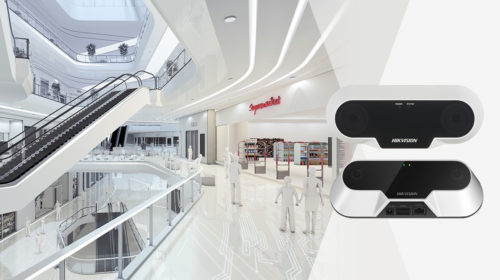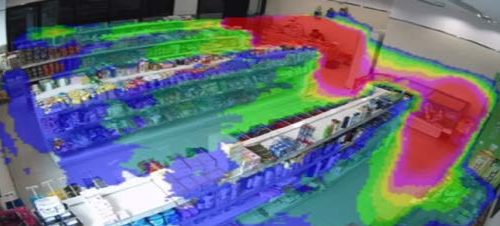In this ever-expanding era of artificial intelligence (AI), Deep Learning will soon become the foundational technology for the security industry. Technologies that ‘learn’ will become more common and more powerful. This trend will strengthen critical security efforts in every sphere. Hikvision introduces three camera models equipped with deep learning algorithms in the smart retail industry.
With the growing popularity of shopping online, the retail sector has felt the disruptive impact of Internet e-commerce more than most industries. Some have reacted to online competition by closing physical stores, but others are attempting to overcome challenges through technological transformation. Traditional retail lacks intelligent tools for accurate data collection and visualization, making it unable to provide a basis for business decision-making at the shop.
People counting
There is an old saying in the trade industry – ‘Small profits but quick turnover;’ and footfall is a ‘KPI’ – key profit indicator – that helps make that turnover. Compared to e-commerce, traditional offline retail stores lack the capabilities to accurately calculate customer flow. Hikvision’s dual-lens people-counting camera provides accurate customer counting and generates customer flow trends to evaluate performance and strategic initiatives.
Although in a real-world scenario, shadows or other objects may easily cause miscounts, but the dual-lens people-counting camera, equipped with two cameras and powered by a deep learning algorithm, easily overcomes such interferences and delivers highly accurate data. A key advantage of deep learning algorithms over surveillance cameras’ vision algorithms is that deep learning can be continuously trained and improved with better and more data-sets. This means the longer it works, smarter it gets. Featuring binocular stereo vision, 3D people detection, and height filtering technologies, the dual-lens people-counting camera is able to accurately distinguish human beings from non-human objects, and movements in the background.
By analyzing customer flow data, store management can optimise the allocation of the workforce to ensure better customer service and reach higher profits. Store managers can schedule staff strategically for peak and off-peak hours. Furthermore, they can also develop strategic marketing activities to attract customers by analyzing the data of incoming rates (entering vs. passing by).
Heat mapping
When customers enter the store, retailers are concerned to know about what merchandise customers are interested in. Before that, what’s more important is how to get the route they walk through and where they stop. With Hikvision’s Heat Mapping function, retailers can determine the amount of time shoppers spend in specific areas of a store, identify hot spots and dead zones, and measure the number of people who actually shop for specific products, rather than just casually walk by.
Heat mapping is used to monitor and measure the size of target traffic in a region. It is a graphical representation of data represented by colors, and it is usually used to analyze the visit times and dwell times of customers in a specified area. The heat mapping function is often used in shopping malls, supermarkets, museums etc., that can find customers’ preferences over time through heat maps, offering insight how to best place items and design the store layout.
As a representative product, Hikvision’s fisheye cameras, equipped with heat mapping function, not only capture a panoramic high-definition image but also learn about heat conditions in different regions within a store. In spacious areas, fewer cameras means reduced installation and labour fees. Hikvision’s fisheye cameras are ideal for these areas, maximising monitoring views and image quality insurance.
Queue detection
What do you do if you always have to queue for a long time while shopping? Keep waiting, or give up shopping and avoid that store in the future. In the retail industry, waiting time is one of the most important factors affecting the customer experience. Hikvision’s Queue Detection function can help retailers manage checkout lines. When too many customers enter a queue, it can notify management to open a new checkout line.
More specifically, Hikvision’ queue detection cameras can monitor the queuing situation in real-time. Firstly, cameras count the number of people in each queue and then track the dwell time of each customer. Once it is found that the number of people in a queue is too many, or the average dwell time of customers is too long, an alarm is triggered to prompt a response. Store management is reminded to open checkout windows to reduce waiting times, improving transaction efficiency and the entire shopping experience.
Hikvision smart retail solution is designed to help retailers bring offline stores into a digital world, allowing data to support management and operations. It promotes retailers’ technological transformation in response to increased industry competition through the use of innovative retail technology.

Ashish P. Dhakan – MD & CEO, Prama Hikvision